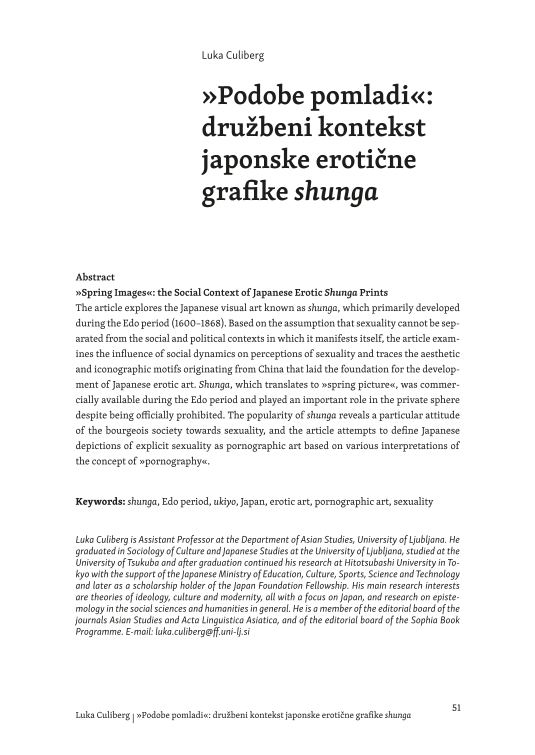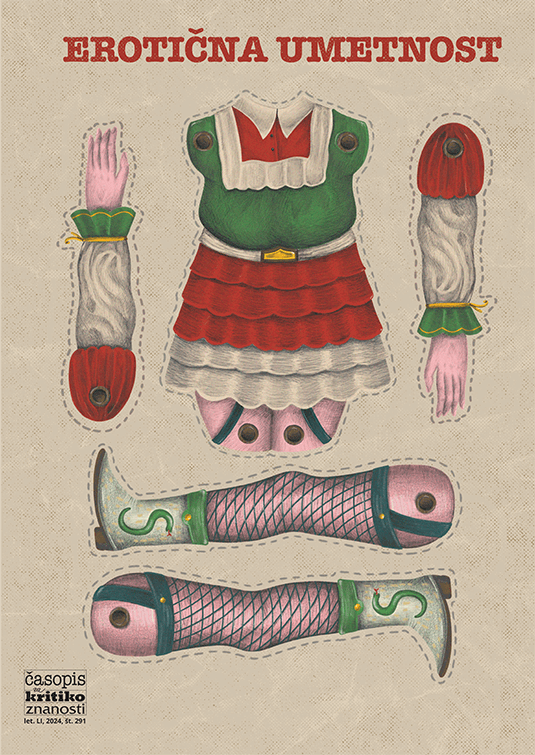The article explores the Japanese visual art known as shunga, which primarily developed during the Edo period (1600–1868). Based on the assumption that sexuality cannot be separated from the social and political contexts in which it manifests itself, the article examines the influence of social dynamics on perceptions of sexuality and traces the aesthetic and iconographic motifs originating from China that laid the foundation for the development of Japanese erotic art. Shunga, which translates to »spring picture«, was commercially available during the Edo period and played an important role in the private sphere despite being officially prohibited. The popularity of shunga reveals a particular attitude of the bourgeois society towards sexuality, and the article attempts to define Japanese depictions of explicit sexuality as pornographic art based on various interpretations of the concept of »pornography«.




